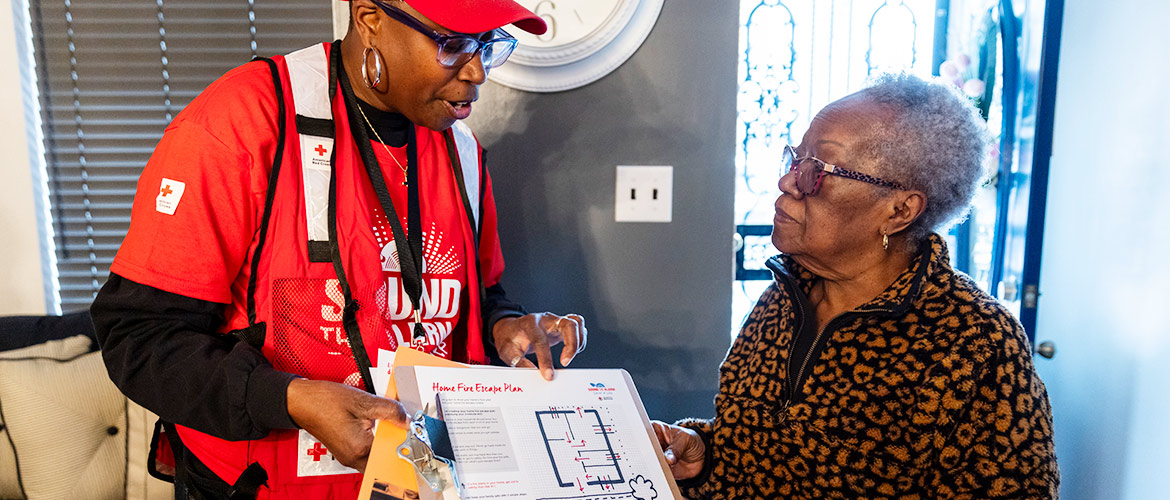The American Red Cross and Blue Cross and Blue Shield of Illinois are working together to help ensure communities most vulnerable to house fires have functioning smoke alarms and active escape plans should disaster strike.
The risk of dying in a house fire is cut in half in homes with a working smoke alarm, and an active escape plan further enhances survival odds, according to the National Fire Protection Association. And nearly three out of five fire deaths occur in homes without an alarm or without a working alarm.
To combat fire-related deaths, the American Red Cross launched its Alarm & Youth Preparedness Program in 2014. The initiative installs free smoke alarms in homes, works with families to develop an escape plan and helps young students learn, practice and share safety information about how to handle a house fire.
“Having a safe environment is a priority for families, and one of the easiest things you can do to create a safer environment is to install a smoke alarm and develop an escape plan,” says Hilary Duerksen, senior philanthropy officer, American Red Cross.
With help from a $75,000 BCBSIL Blue Impact℠ grant, American Red Cross is continuing its educational programming and purchasing alarms, ladders, transportation and other things needed to install smoke alarms in homes across Illinois. The grant is part of BCBSIL’s mission to create a safe and healthy environment for communities throughout the state.
The initiative utilizes fire response heat maps to identify vulnerable areas and communities, which are often socioeconomically disadvantaged areas that are home to people with mobility issues, hearing impairments, the elderly and children.
“If you’re a family and you have to choose between putting dinner on the table or buying a smoke alarm, what are you going to choose?” says Duerksen. “Most likely the more immediate necessity.”
American Red Cross volunteers physically install alarms with 10-year lithium-ion batteries. That includes special bed-shaker alarms that use vocal instructions, vibrations, light and sound to alert hearing-impaired individuals to fires. Nearly 15% of the U.S. population is affected by hearing loss, making these special alerts a top priority for American Red Cross.
Each year American Red Cross responds to about 64,000 disasters, most are home fires. Since the Sound the Alarm & Youth Preparedness Program launched, it has reached more than 1.9 million young people and saved nearly 2,000 lives, Duerksen says.
A key component of this success is connecting with children early-on, she says. The program designs curriculum specifically for children in kindergarten through fifth grade, including a penguin mascot named Prepare with Pedro.
Partnering with pillars of the community is also crucial to reaching people, Duerksen says. American Red Cross works closely with churches, schools, summer camps, fire departments and other local organizations.
This past year, the Alarm & Youth Preparedness Program coordinated an event with the Ephphatha Lutheran Church of the Deaf in Chicago’s Chatham neighborhood that led to 209 alarm installations, 20 bed shaker alarms and 17 strobe light alarms.
“We’re proud to work with the American Red Cross and its partners on fire prevention efforts for communities in need,” said Tonita Cheatham, Exec. Director, Communications & Community Relations at BCBSIL. “Our Blue Impact grants are one of the ways we support that work to protect the health of people across Illinois.”

